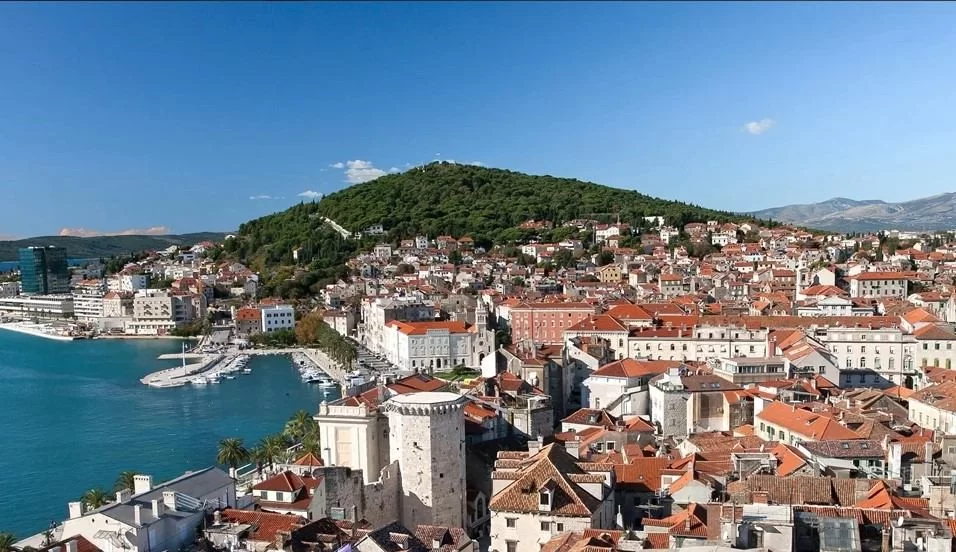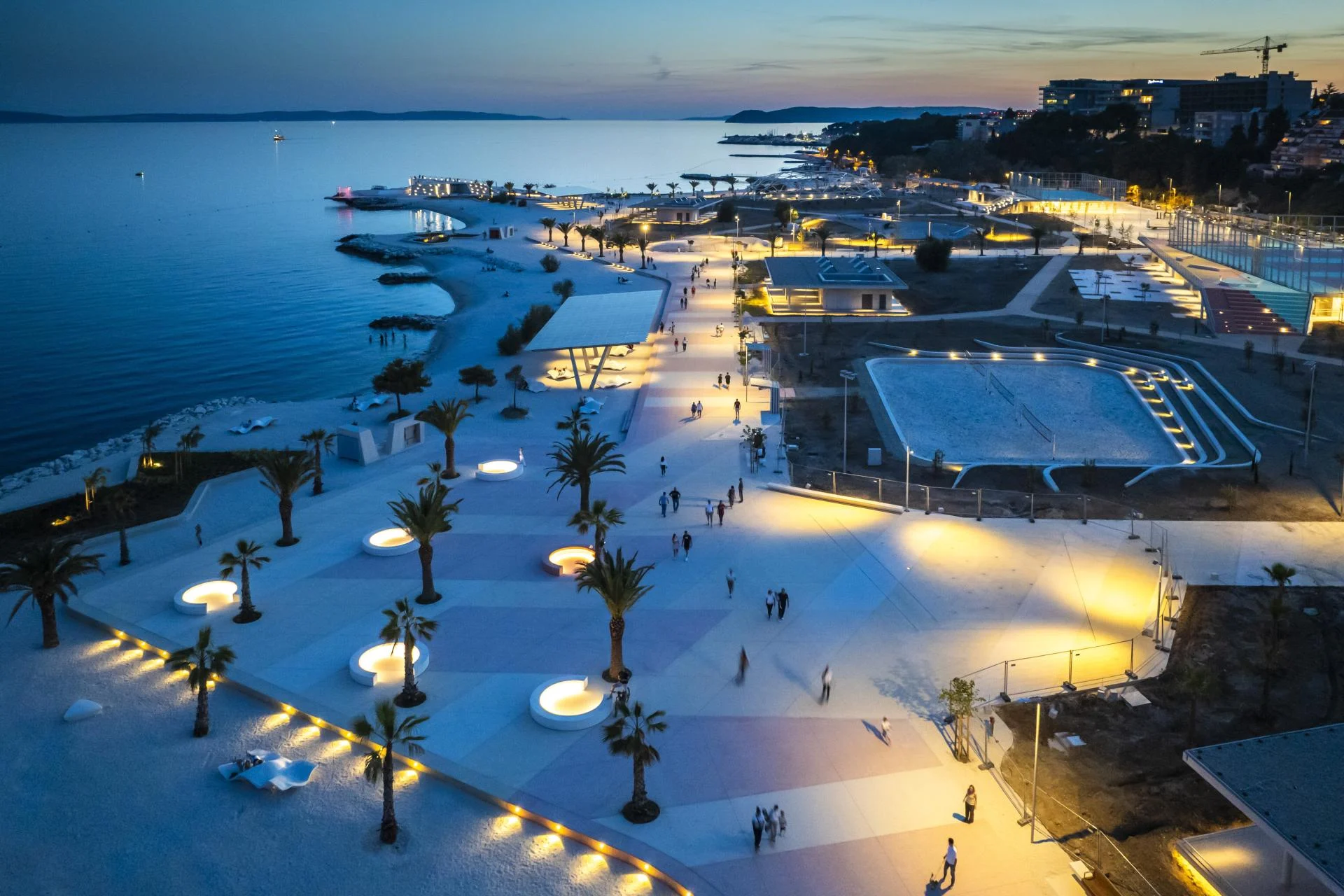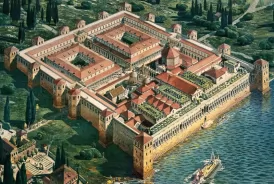From Roman Emperor Diocletian’s Palace to Ultra Europe Festival: How Split Transformed into Croatia’s Crown Jewel
- Teo Drinkovic
- Sep 18, 2025
- 5 min read
Discover Split’s journey from a struggling port city to a Croatian and global cultural and tourist hotspot

Introduction
Split is a city that, in the past twenty years, has undergone perhaps one of the greatest renaissances in Croatia. Once labeled merely a “port city,” with tourists passing through or staying one night while waiting for a ferry or a late flight, Split has risen far above those modest expectations.
What had once been a messy harbor, smelly and dirty sea, and general lack of cleanliness has been transformed, like a real-life Cinderella, into a beautiful Mediterranean capital and pride of the Split–Dalmatia County. Split is proof that with will, vision, and capable city leadership, an entire city (and its people) can be transformed.
Today, Split is a tourist mecca, Croatia’s second-largest city with about 330,000 residents. It’s the seat of Split–Dalmatia County and the largest metropolis in Dalmatia.
History of Split
The story of Split stretches back more than two thousand years. Originally founded as an Illyrian settlement, or perhaps as a Hellenic colony, Aspálathos emerged in the 3rd or 2nd century BC. In Roman times, Split became most famous for Diocletian’s Palace, built around 305 AD. Many parts of that palace are still visible today, most notably the cellars of Diocletian and the Peristyle square.
After the nearby Roman city of Salona fell to the Avars and Slavs, Diocletian’s Palace became a refuge; inside its walls grew a new urban area later called Salona Nova. In the early Middle Ages, Split fell under Byzantine influence, and later came under the rule of Croatian princes and kings. Through those centuries, it became a major trading and ecclesiastical center, with the Cathedral of St. Domnius (Katedrala Svetog Duje) standing as its symbol.

In the 12th century, Split came under Hungarian and later Venetian rule, as Venice increasingly incorporated it into its trading networks. Despite frequent political change, Split remained a lively urban center; its medieval fabric still shapes how the city looks today.
After World War I, Split became part of the Kingdom of Serbs, Croats and Slovenes (later Yugoslavia). Under socialist Yugoslavia, the city experienced rapid industrial growth: shipyards, factories, and a port that grew in importance on the Adriatic.
Following Croatia’s independence in 1991 (with the trials of war in between), Split turned toward tourism as a new engine of growth. From the 2000s on, the city invested in restoring its historical core, improving tourist infrastructure, and building hotels and apartments along the coast. Old factory halls were converted into hotels and museums; new transport links improved accessibility.
A new airport in Kaštela, upgraded highways, and numerous ferry and catamaran lines to the islands and Italy have made the city more accessible than ever. Thanks to these developments and the valorization of its historical heritage, Split has quickly become a magnet for visitors from around the world.
Natural Beauty & Landmarks
Split, or the City under Marjan, as its residents often call it, is located on a convenient peninsula where mountains and the sea protect the city from the continental cold.
Marjan
Often called “the hill above the city,” Marjan is a forested park just west of Split, rising to 178 meters above sea level. Covered in pine trees, its trails, viewpoints, beaches (Kašljuni, Bene), and the small church of Our Lady of Bethlehem at its summit make it a favorite getaway for locals and tourists alike.
Bačvice Beach
Bačvice is arguably Split’s most famous city beach: fine sand, shallow warm water, perfect for families and casual swimming. It’s also home to picigin, a quirky game played in the shallows with a small ball; keeping the ball in the air is the whole point. As simple as it sounds, it demands coordination, stamina, and (honestly) a fair bit of energy.
Žnjan Beach
On the eastern side of the peninsula lies Žnjan, a long pebble beach. It has been completely renovated recently and now offers modern amenities for beachgoers.
Nearby Islands
From Split’s port, boats and catamarans regularly head to nearby islands: Brač (where the famous Zlatni Rat beach is), Hvar, Vis, and Korčula. They make for ideal day trips where visitors can discover crystal-clear water, scenic bays, and island life.
Klis Fortress
Just outside Split, high above on a hill, is Klis Fortress, an impressive medieval stronghold. It has entered popular culture in recent years: some Game of Thrones scenes were filmed in its surroundings.
Source: Google.com
Cultural & Architectural Highlights
Diocletian’s Palace: In the old town, this ancient complex still dominates. Around 3,000 people live within its walls. Inside and around the palace are restaurants, shops, and apartments; you can walk “through history” every time you pass through its alleys.
Peristyle: Once the main courtyard of the palace, now a square surrounded by Roman columns and monumental facades. It’s often used as an open-air theater for concerts and performances.
Cathedral of St. Domnius: Built originally as Diocletian’s mausoleum, this cathedral, with its tall bell tower, offers one of the best views of the city from above.
Riva: The waterfront promenade near the palace, lined with palms, cafes, and restaurants. It’s a gathering place: people sipping morning coffee, taking evening strolls, watching boats in the harbor. Next to it lies the beginning of the “lungomare,” the seaside walking path.
Marmont Street & Nearby Palaces: Once built for the Austrian military, now transformed into a charming pedestrian zone with shops and restaurants.
Pjaca (People’s Square / Narodni trg): Medieval square with a Renaissance council building and a 15th-century bell tower, surrounded by historic palaces and places to eat and drink.
Source: Google.com
Culture, Events, & Sports
Culture in Split pulses year-round, reaching a crescendo in summer with festivals and performances. Splitsko ljeto (Split Summer) is traditional: opera, ballet, drama, concerts in the city’s historic venues. There are also spontaneous concerts, klapa singing (a cappella Dalmatian vocal harmony), and performances in palaces and squares.
Since 2013, Split has hosted the internationally renowned electronic music festival Ultra Europe. Up until recently, the festival took place at Poljud Stadium; from next year, it will be held in the nearby Park mladeži, drawing younger crowds and boosting the city’s profile.
Source: Google.com
Daily life in Split is vivid: the Pazar market with its fruits, vegetables, and bargaining; the fish market (Peškarija) where fresh shrimp, fish, and shells are sold, always with a side of friendly haggling.
Sports are huge: Split has produced stars like tennis legend Goran Ivanišević, high jumper Blanka Vlašić, and basketball icon Toni Kukoč. The Poljud Stadium is a city icon: Hajduk Split, a football club, is woven into the civic identity; matches there are visceral experiences.
Split is also a gateway. Just a short drive north is the UNESCO town of Trogir, and an hour’s drive away lie the waterfalls of Krka National Park. From Split’s port, you can reach islands daily (Brač, Hvar, Vis, Korčula, Lastovo), making day trips to pristine waters and picturesque bays seamless.
Meanwhile, the city is modernizing: new marinas, renovated congress centers, and Smart City projects are making Split welcoming not only to tourists but also to business travelers and innovators.
Conclusion
Split leaves every visitor with vivid memories: ancient architecture, strong cultural pulses, Mediterranean relaxation, the smell of the sea, the buzz of festivals, all mixed with real local life. It doesn’t leave anyone indifferent.
As one travel writer said: “once an industrial port city, now one of Croatia’s best destinations.” Truly, Split is a living museum by the sea, where antiquity and modernity dance together under the sun. To visit Split is not just to see it; you feel its layers of history, its pulses of cultural energy, its warmth. It is a destination worth experiencing in person.






















Feel free to comment!